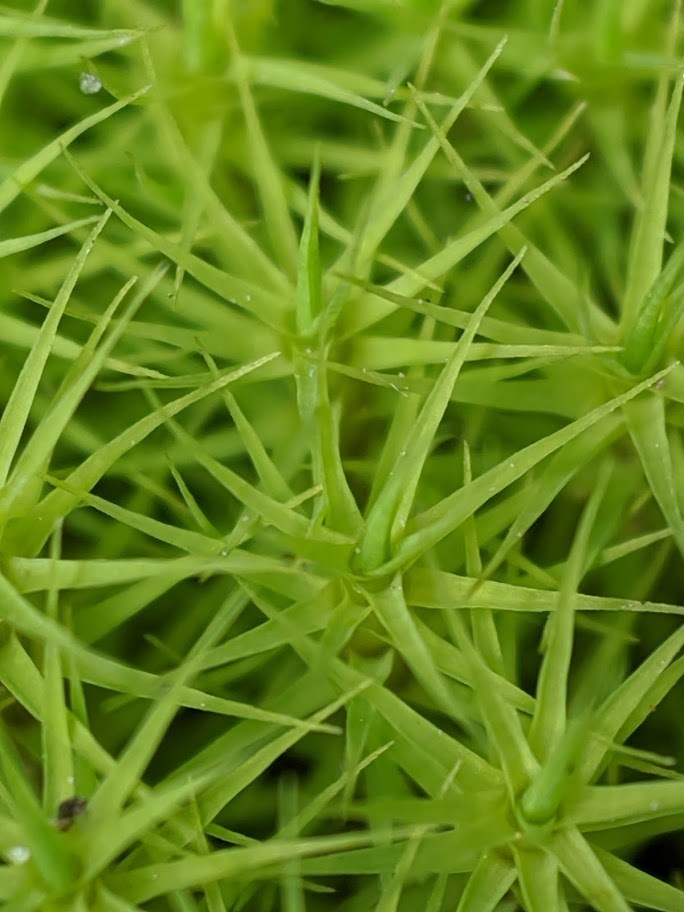Bartramia robusta
Hook.f. & WilsonDioicous. Loose tufts on soil and rocks, yellow-green. Stems to 1–4 cm long, simple or sparingly branched, with dense reddish brown rhizoids at base. Leaves patent when moist, erecto-patent to somewhat spreading and flexuose to rather curled when dry, with an obcuneate hyaline sheathing base and a linear-lanceolate green lamina, to 3.5–6.25 mm long, 0.5–1 mm wide; apices subulate; costae percurrent or short-excurrent as a denticulate awn; margins denticulate, plane, unistratose, without a distinct border; laminal cells in the subula linear, (13–) 15–31 (–33) μm long, (4–) 5–7 μm wide, bistratose except at margin, prorate; laminal cells in sheathing base linear, (75–) 84–151 (–157) μm long, (8–) 9–19 (–23) μm wide, hyaline, unistratose, smooth. Seta 10–30 mm long, reddish-yellow to reddish-brown, smooth. Capsule suberect, subglobose, symmetric, 1.6–2.5 mm long. Peristome of 16 exostome teeth, endostome rudimentary. Operculum low-conic.
Gold, CVU, GGr, NIS, EGL, EGU, HSF, HNF, OtR, MonT, HFE, VAlp. Widespread along and south of the Great Dividing Range often beside streams and rivers, otherwise among dry or wet sclerophyll forest, or woodland from the alpine zone to near sea-level. Also WA, SA, Qld, NSW, ACT and Tas. New Zealand, and Auckland, Heard, Macquarie and Marion Islands.
Previously recognised in Australia under B. ithyphylla, which is now considered restricted to South America and high latitudes of the northern hemisphere (Fransén 2004). Bartramia ithyphylla is synoicous and the laminal cells in the apical half of the leaf are longer (most greater than 30 μm long). There also appears to be a difference in chromosome number between the two species with n = 8 reported for B. hampeana (Ramsay in Löve 1967) and n = 12 and 16 in B. ithyphylla (Fransén 2004).
 Spinning
SpinningSynonyms
Bell, G.H. (2006). Bartramia. Flora of Australia 51: 249–256.
Fransén, R. (2004). A taxonomic revision of extra-Neotropical Bartramia section Vaginella C.Müll.. Lindbergia 29: 73–107.
Löve, A. (1967). IOPB Chromosome Number Reports. XIV. . Taxon 16: 552–571.


